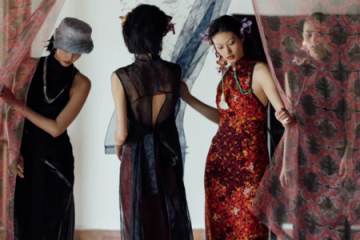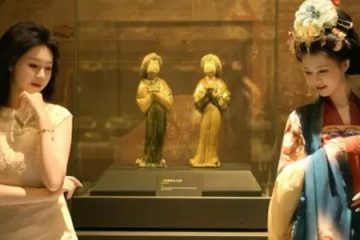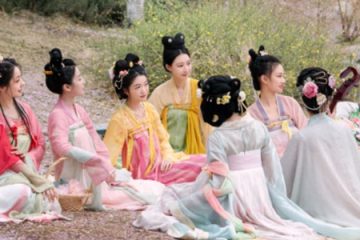Why Was Hanfu Once Banned in China?

Hanfu has been gaining popularity both in China and abroad in recent years, but that wasn’t always the case. Back around 2010, when I was still in elementary school, most people in China didn’t even know what Hanfu really was. The mainstream trends at the time had nothing to do with traditional or “Chinese chic” style.
I remember a TV show that aired in 2015 where a group of Hanfu enthusiasts appeared in full traditional attire to introduce the clothing. One of the hosts even jokingly (and a bit harshly) said it looked like something a bathhouse worker would wear. This reaction wasn’t uncommon — and there’s a reason for that. Hanfu was once banned in Chinese history, which led to generations of people growing up without any familiarity with it. That’s part of why so many didn’t recognize it at first.
What Is Hanfu?
Hanfu simply refers to the Chinese traditional clothing worn by the Han ethnic group—literally “Han people’s clothing.” It has a long history, dating back to the Qin Dynasty (221 BCE) and continuing through the Ming Dynasty (ending in 1644). That’s over 2,000 years of evolving styles!
There are many different types of Hanfu, each with unique designs and silhouettes. Even just looking through our website’s collection of traditional styles, you’ll see a wide variety. The image below also highlights some of the most iconic looks from different periods.
From left to right in the picture are Hanfu styles of the Qin and Han dynasties, Wei and Jin dynasties, Tang dynasty, Song dynasty, and Ming dynasty respectively. ↓↓

Hanfu isn’t a single style, but a system of clothing that typically features:
- Crossed collars
- Right-over-left wrapping
- Flowing sleeves and wide silhouettes
- Ribbons and sashes instead of buttons or zippers
Hanfu in Qing Dynasty
The turning point came after the fall of the Ming Dynasty, when the Manchu-led Qing Dynasty took power. As a minority ruling over the Han majority, the Qing government introduced a series of policies to consolidate control—many of which erased key symbols of Han identity. One of the most impactful was the policy known as *“cutting hair and changing clothes”*, which required Han men to abandon their traditional Hanfu and adopt Manchu hairstyles and clothing.
For men, this meant shaving the front of their heads and wearing a long braid at the back—mirroring Manchu customs. The photo below, taken by British photographer John Thomson in the late 19th century, shows this hairstyle worn by most Chinese men of the time.
Interestingly, Han Chinese women weren’t subject to the same strict dress codes, so traditional Hanfu styles for women remained relatively unchanged through the late Ming and early Qing periods. That’s why you’ll find many “Qing-Han fusion” outfits for women on our site today.

Along with hairstyles, clothing also changed significantly. The traditional long robes worn by Han Chinese men were gradually replaced by Manchu-style qizhuang (banner clothing). If you look closely, you’ll notice that qizhuang has some distinct features compared to Hanfu: the collars are usually straight and upright, the garments often open to the side or have symmetrical front openings, and they lack the signature cross-collar of traditional Han clothing.
One of the most noticeable elements is the “arrow sleeve”—narrow cuffs that can be folded back, designed to keep warm while allowing freedom of movement, especially for horseback riding and archery. These practical design choices reflect the nomadic lifestyle of the Manchu people.

The Republican Era: Modernization and Self-Rejection
By the fall of the Qing Dynasty in 1912, China was going through the growing pains of modern revolution. The new Republic of China was eager to modernize and adopt Western ways. In this push for reform, traditional clothing—including Hanfu—was seen by many as outdated, feudal, or impractical.
Movements like the New Culture Movement (1910s–1920s) urged young people to reject old customs and embrace modern ideas. Western suits and the Chinese tunic suit (Zhongshan suit) became symbols of progress, while Chinese national dress was relegated to theater costumes or museum displays, often linked to outdated traditions.

The 20th Century: Political Movements and Cultural Erasure
But as with many movements, things sometimes swung too far. While the original goal of changing clothing was to give China a fresh, modern image, some people took it to the extreme. During the Cultural Revolution (1966–1976), anything tied to the “Four Olds” (old customs, culture, habits, and ideas) became a target. Under the influence of the Gang of Four, what began as reform turned into a form of political correctness—Hanfu was no exception.
As a result, practical styles like the Zhongshan suit fully replaced traditional clothing. If you had asked someone back then why they didn’t wear Hanfu, you might’ve just gotten a blank stare and the question, “What’s Hanfu?” Over time, Hanfu faded from public memory, tucked away and forgotten.
The Revival: Rediscovering Hanfu in the 21st Century

In the early 2000s, something unexpected happened—young people in China began to rediscover and embrace Hanfu.
In 2003, a man named Wang Letian wore Hanfu in public in Zhengzhou, sparking widespread attention online. That moment helped ignite a grassroots movement, led by students, designers, and history enthusiasts. They dug through museum archives, paintings, and archaeological records, trying to recreate the styles and patterns of ancient times.
What’s especially touching is that many of these young people started out simply wanting to revive beautiful clothing from the past. But as more like-minded individuals joined in, some went on to launch well-known Hanfu brands.
Today, the Hanfu revival is thriving:
- Dedicated festivals attract thousands of attendees (I’ve been to a few myself!).
- Social media is full of everyday Hanfu styling tips (I’ve discovered lots of brands this way).
- Designers are blending traditional silhouettes with modern fabrics and aesthetics—many of the modern Hanfu pieces on our site are the result of their creativity.
Summary
The disappearance of Chinese style dress was the result of dynastic shifts, political suppression, cultural shame, and historical amnesia. But fortunately, the passion of younger generations has brought it back. At the end of the day, why has Hanfu gained so much popularity again? Simply put—because it’s beautifully made. Even if forgotten for a time, its craftsmanship speaks for itself. Sooner or later, someone was bound to recognize its beauty.



0 Comments